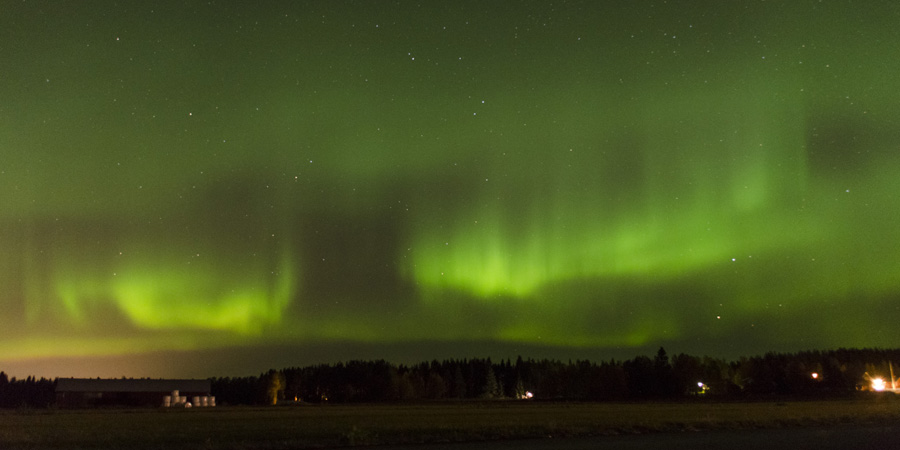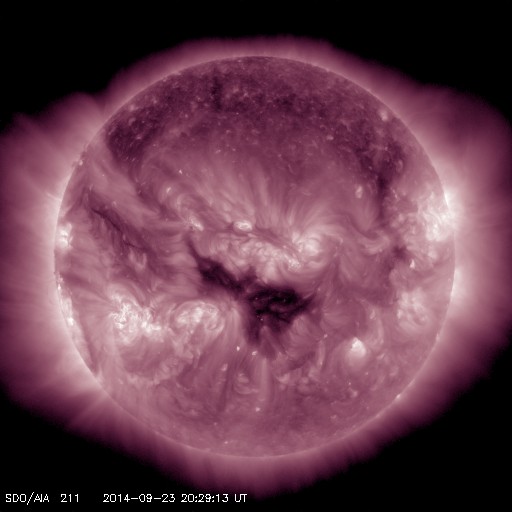Space weather update
Tuesday, 23 September 2014 20:51 UTC

Solar activity is low despite the presence of large sunspot region 2172 on the earth-facing solar disk. We shed some light on why this promising looking sunspot region is so quiet and what other space weather we can expect in the coming days.
Sunspot region 2172
Sunspot region 2172 covers a sunspot area two and a half times the surface of planet Earth... a pretty respectable size but it is very quiet... even C-class solar flares are rare events. Why...? The reason is simple: this sunspot region has the size but not the magnetic complexity.

On the image below you can see that the different polarities (red and blue) are nicely divided instead of being mixed and close to each other. Red (negative polarity) in the east and blue (positive polarity) in the west. We can conclude that this region is nothing more than a large sunspot region with a simple Beta magnetic layout. Strong solar flares are unlikely from this sunspot region.

Geomagnetic activity
We remain under the influence of weak coronal hole high speed solar wind stream effects. The solar wind speed lies around 390km/s and the direction of the IMF has occasionally been drifting south during the past 48 hours causing unsettled geomagnetic conditions. Spectaculair aurora displays have been seen the past few days at high latitudes like yesterday in Luleå, Sweden (header image) but we have also heard report of the Aurora Australis being visible from Tasmania last night. There is however more aurora on the way as yet another coronal hole is now facing Earth (image below.) This solar wind stream could reach Earth in 3 days but we will likely see continued effects the coming days of another coronal hole that rotated out of view already. Aurora displays at high latitudes remain possible in the coming 3 to 4 days. Stay alert!
Solar images courtesy of the NASA Solar Dynamics Observatory.
Header image courtesy of Marcel de Bont from SpaceWeatherLive.com (22 September 2014 - Luleå, Sweden.)
Thank you for reading this article! Did you have any trouble with the technical terms used in this article? Our help section is the place to be where you can find in-depth articles, a FAQ and a list with common abbreviations. Still puzzled? Just post on our forum where we will help you the best we can!
Latest news
Latest forum messages
Support SpaceWeatherLive.com!
A lot of people come to SpaceWeatherLive to follow the Sun's activity or if there is aurora to be seen, but with more traffic comes higher server costs. Consider a donation if you enjoy SpaceWeatherLive so we can keep the website online!

Space weather facts
| Last X-flare | 2025/03/28 | X1.1 |
| Last M-flare | 2025/04/22 | M1.3 |
| Last geomagnetic storm | 2025/04/21 | Kp5+ (G1) |
| Spotless days | |
|---|---|
| Last spotless day | 2022/06/08 |
| Monthly mean Sunspot Number | |
|---|---|
| March 2025 | 134.2 -20.4 |
| April 2025 | 122.8 -11.4 |
| Last 30 days | 119.6 -11.6 |


